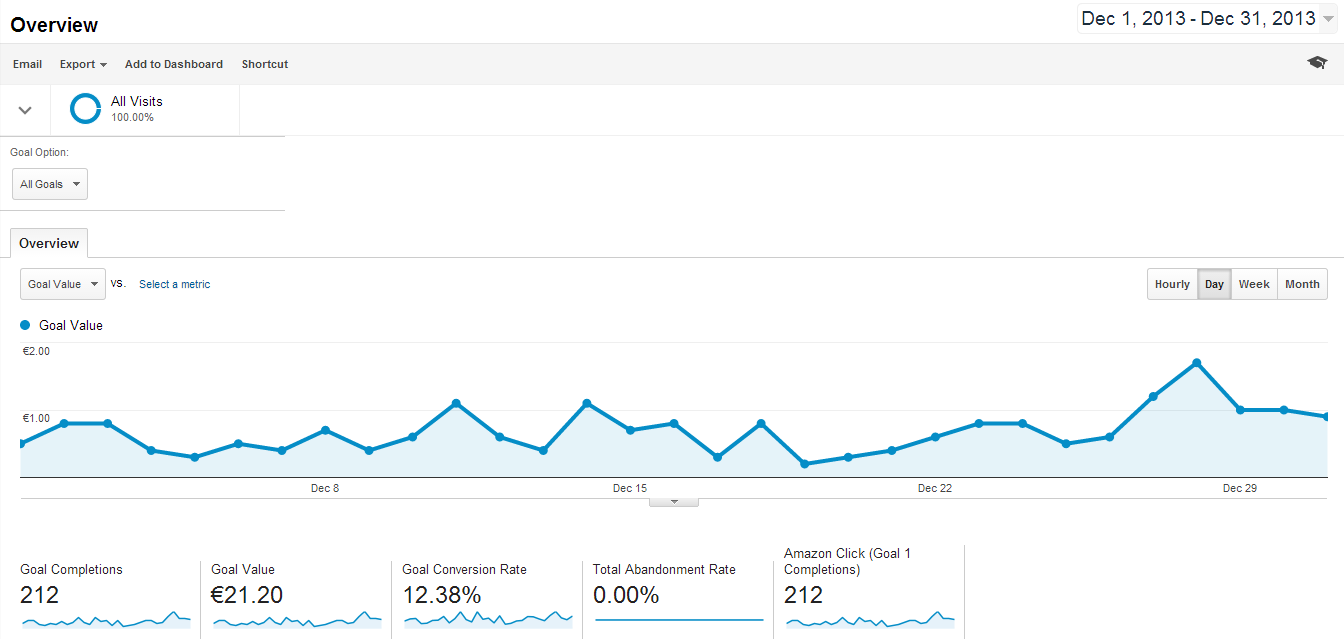Figure out What Data Is Google Analytics Goals Unable to Track
Figure out What Data Is Google Analytics Goals Unable to Track
Blog Article
Discover the Limitations of Google Analytics Goals: Revealing the Information Kind That Remain Untrackable
As companies significantly rely on data-driven decision-making, understanding the limitations of tools like Google Analytics ends up being critical. While Google Analytics Goals deal important understandings into customer communications, there exist data types that thwart tracking, presenting challenges to a thorough understanding of customer actions.
Insufficient User Trip Tracking
Incomplete user journey tracking within Google Analytics can prevent the ability to properly evaluate individual behavior. When the customer journey is not fully tracked, there are voids in the information that stop a thorough understanding of how customers connect with a web site. This absence of insight can cause missed possibilities for optimization and enhancements to the user experience.
One typical issue with insufficient individual trip monitoring is the failure to see the complete path that individuals take in the past completing an objective or leaving the website. Without this information, it is testing to recognize where customers may be encountering challenges or friction points that prevent them from transforming. Furthermore, incomplete tracking can obscure the influence of specific marketing initiatives or internet site changes on individual behavior.
To address this restriction, it is critical to establish up appropriate monitoring systems within Google Analytics to capture the entire user journey. This may entail establishing up event tracking, objective funnels, or utilizing tools like Google Tag Supervisor to ensure that no vital communications go unrecorded. By acquiring a detailed sight of the customer trip, web site owners can make even more educated decisions to improve user engagement and drive conversions.
Attribution Obstacles
Browsing through acknowledgment difficulties in Google Analytics requires a complete understanding of exactly how different touchpoints contribute to the total conversion procedure. Attribution difficulties arise from the complexity of modern-day customer trips, where users engage with multiple channels prior to transforming.
One typical attribution difficulty is the trouble in attributing conversions to the appropriate resource, particularly in situations where customers connect with numerous networks prior to converting. Additionally, cross-device monitoring poses another attribution obstacle, as individuals typically switch over between devices throughout their trip, making it challenging to track their communications seamlessly.
Offline Conversions
Offered the obstacles connected with connecting conversions properly in online networks, the dimension of offline conversions presents a significant chance for online marketers seeking an extra comprehensive understanding of their consumers' journey. Offline conversions refer to actions that customers take in the real world, such as making purchases in brick-and-mortar shops or over the phone, attending occasions, or engaging with published products - what data is google analytics goals unable to track. These conversions are vital for companies that run both online and offline, as they offer beneficial insights into the effectiveness of advertising and marketing projects throughout numerous touchpoints
Tracking offline conversions generally posed a significant challenge for marketing professionals, as it was testing to link these activities back to particular online communications accurately. However, with improvements in innovation, such as the combination of CRM systems, unique identifiers, and coupon codes, services can now link the space between online and offline data to acquire an extra alternative sight of consumer actions. By effectively measuring offline conversions, online marketers can enhance their strategies, allocate resources much more effectively, and ultimately improve the overall customer experience.
Cross-Device Tracking
Cross-device tracking plays a critical function in understanding visit this web-site the interconnected nature of customers' digital communications throughout numerous gadgets. In today's omnichannel globe, click resources where users effortlessly change in between tablets, mobile phones, and desktop computers, tracking their actions throughout these tools is necessary for marketers to acquire a detailed sight of their client journey.

Furthermore, privacy problems and regulations such as GDPR and CCPA have better difficult cross-device tracking. With individuals requiring even more control over their information and increased limitations on monitoring innovations, marketing professionals should locate innovative and privacy-compliant means to link user interactions throughout gadgets.
Dynamic Material Engagement
Recognizing user involvement with dynamic web content is pivotal in enhancing electronic marketing methods for enhanced target market interaction. Dynamic material refers to website aspects that change based on user behavior, choices, or various other variables, providing a personalized experience. However, tracking individual communications with dynamic material postures obstacles for conventional analytics tools like Google Analytics.
While Google Analytics can track basic interactions like clicks and page views, it may have a hard time to record even more nuanced involvements within dynamic web content. what data is google analytics goals unable to track. Metrics such as time invested in specific vibrant components, float actions, or communications within pop-ups are commonly not conveniently quantifiable making use of basic monitoring approaches. This limitation impedes online marketers' capacity to fully comprehend just how customers are engaging with dynamic content and customize their strategies appropriately

Final Thought
Finally, Google Analytics objectives have limitations in tracking incomplete individual journeys, associating conversions precisely, recording offline conversions, tracking cross-device communications, and gauging dynamic web content interaction. These constraints highlight the importance of discovering additional monitoring techniques and tools to obtain a much more thorough understanding of customer habits and conversions beyond what Google Analytics can give.
While Google Analytics Goals offer valuable insights right into user communications, there exist data types that avoid monitoring, positioning challenges Your Domain Name to a thorough understanding of individual habits.Insufficient customer trip tracking within Google Analytics can hinder the ability to precisely assess individual behavior. When the user trip is not totally tracked, there are voids in the information that stop a thorough understanding of just how individuals communicate with a website.One usual issue with incomplete customer journey monitoring is the inability to see the complete path that customers take previously finishing an objective or leaving the site. By getting an extensive sight of the user trip, website owners can make even more enlightened decisions to boost user involvement and drive conversions.
Report this page